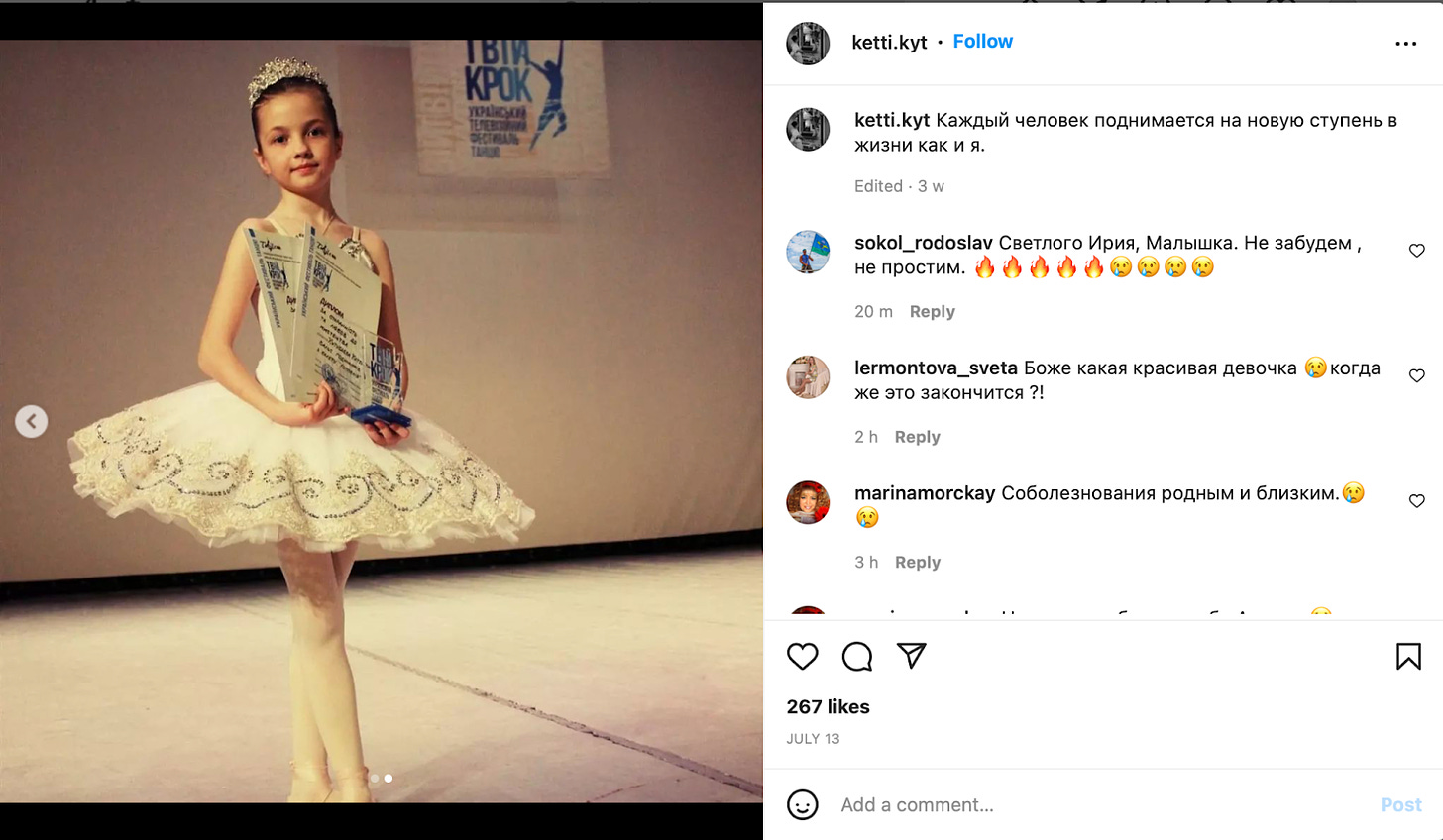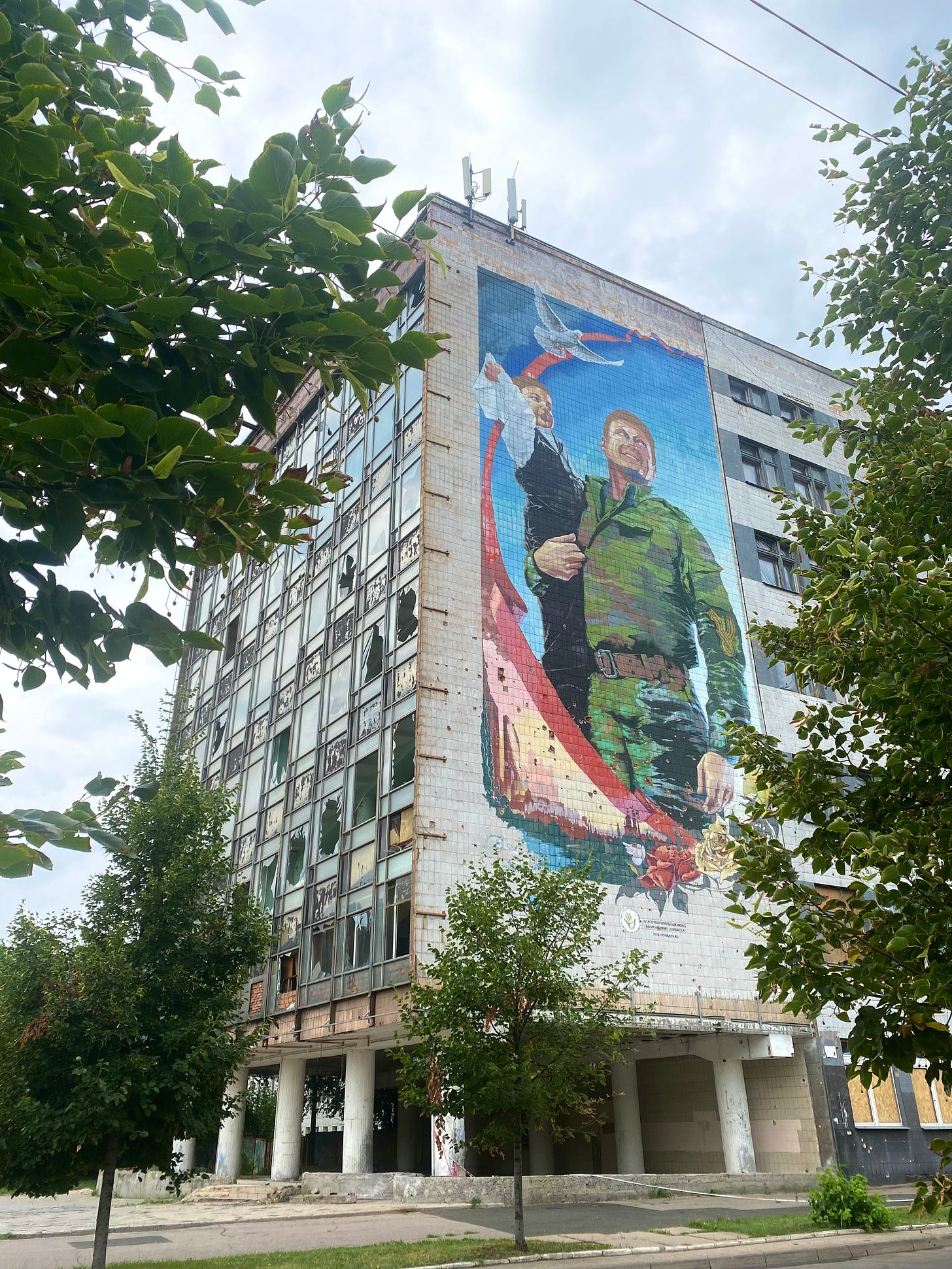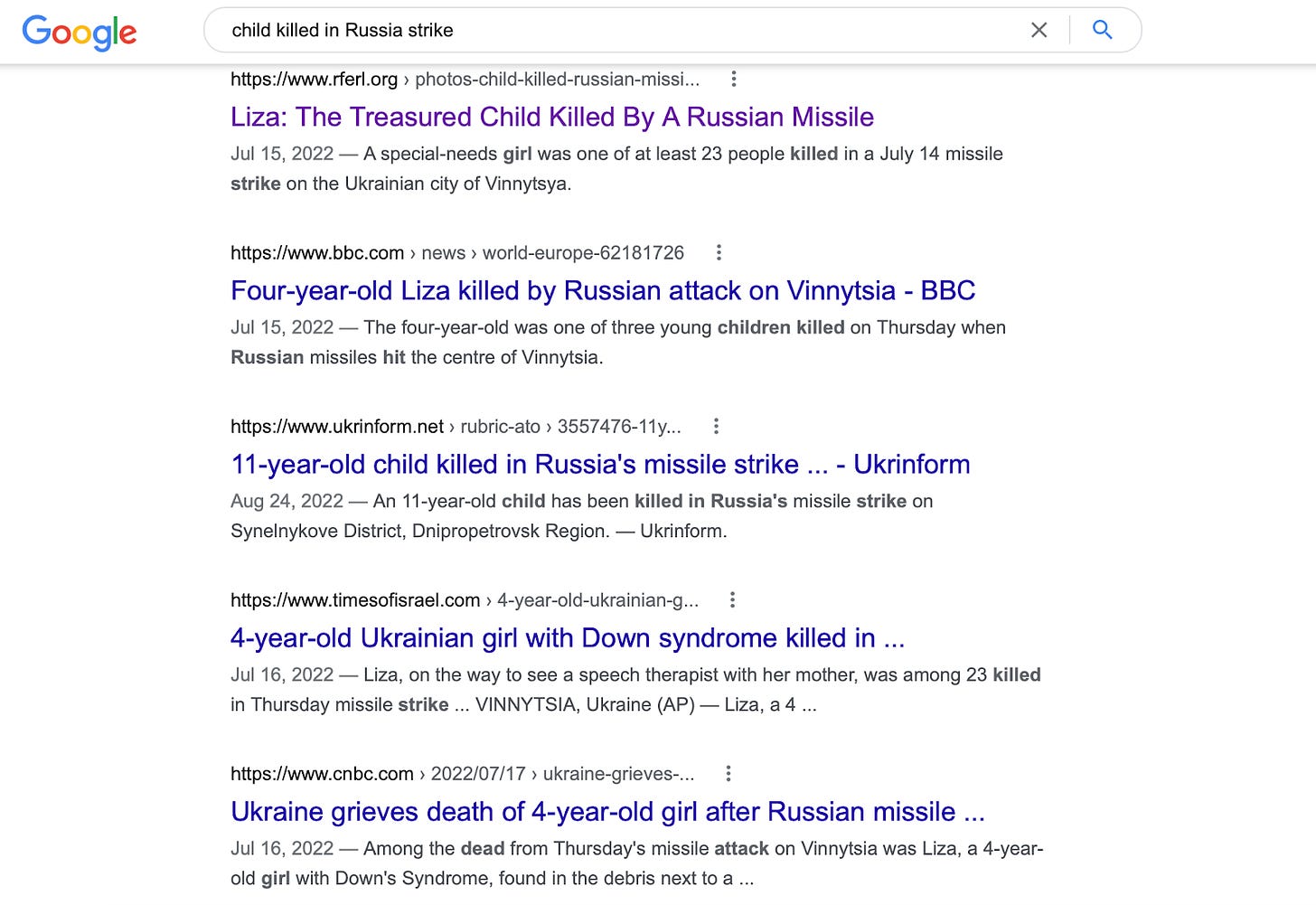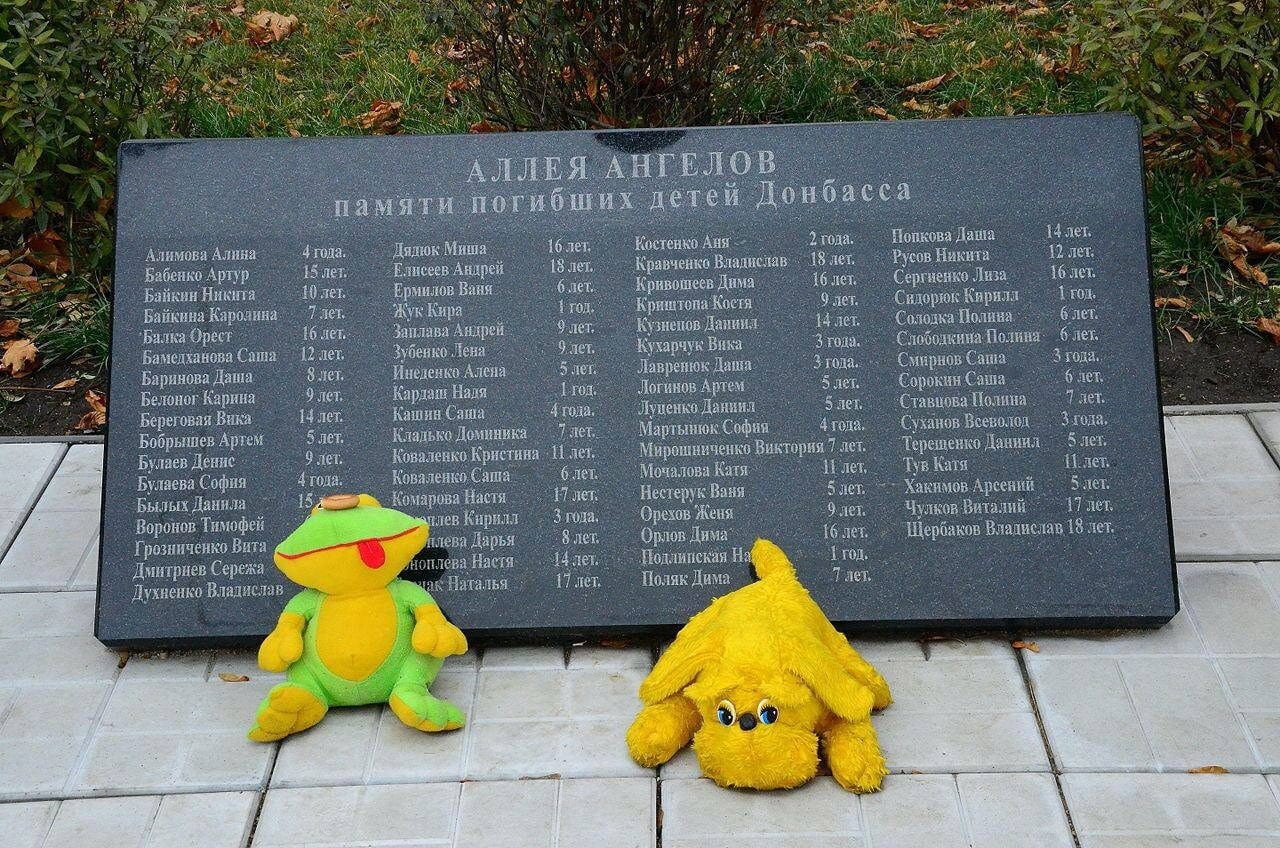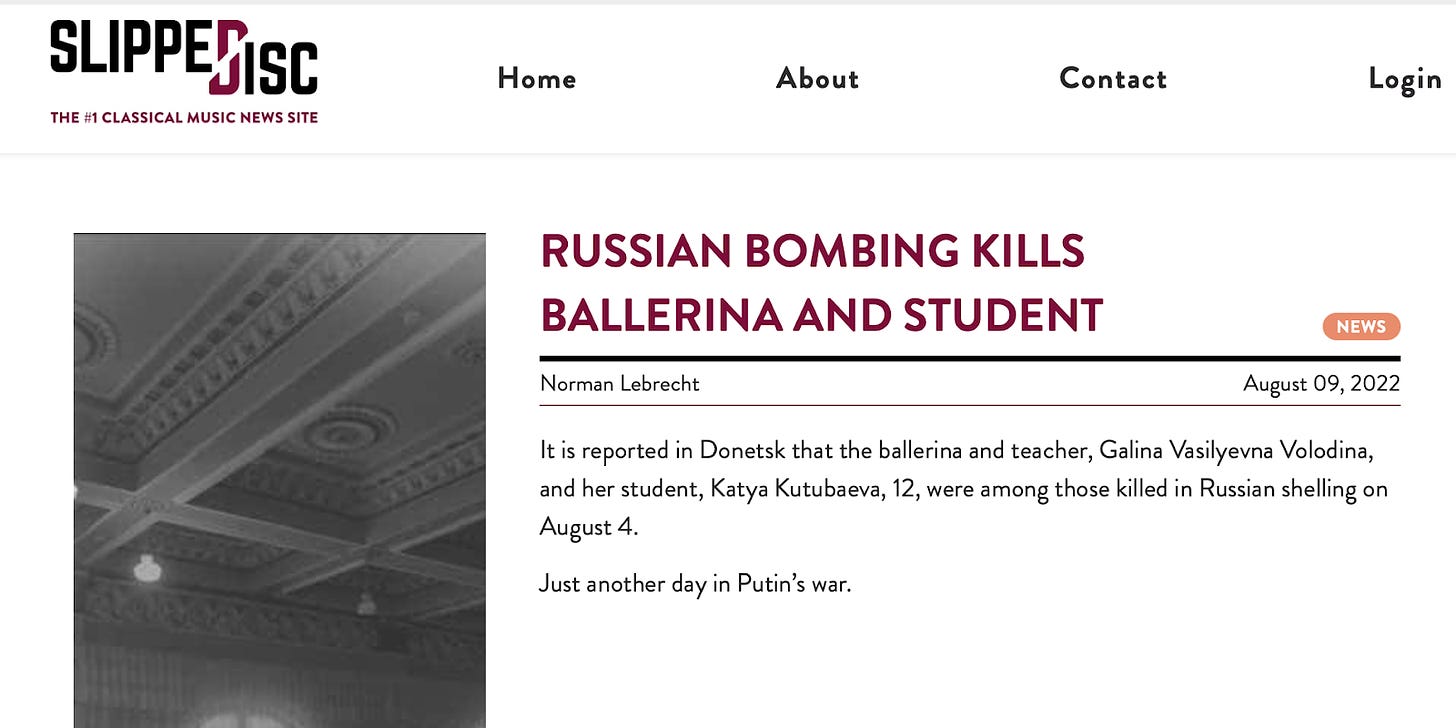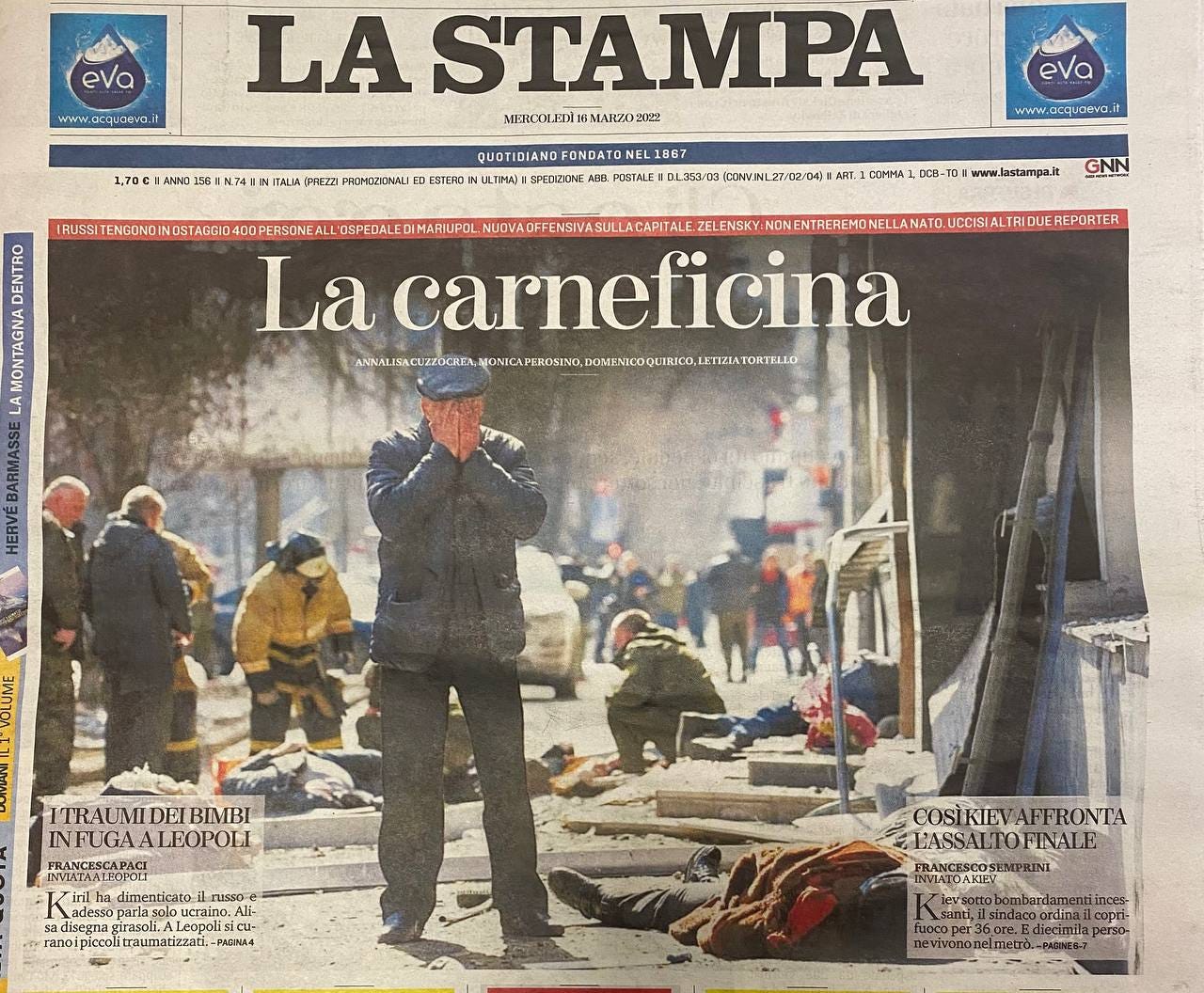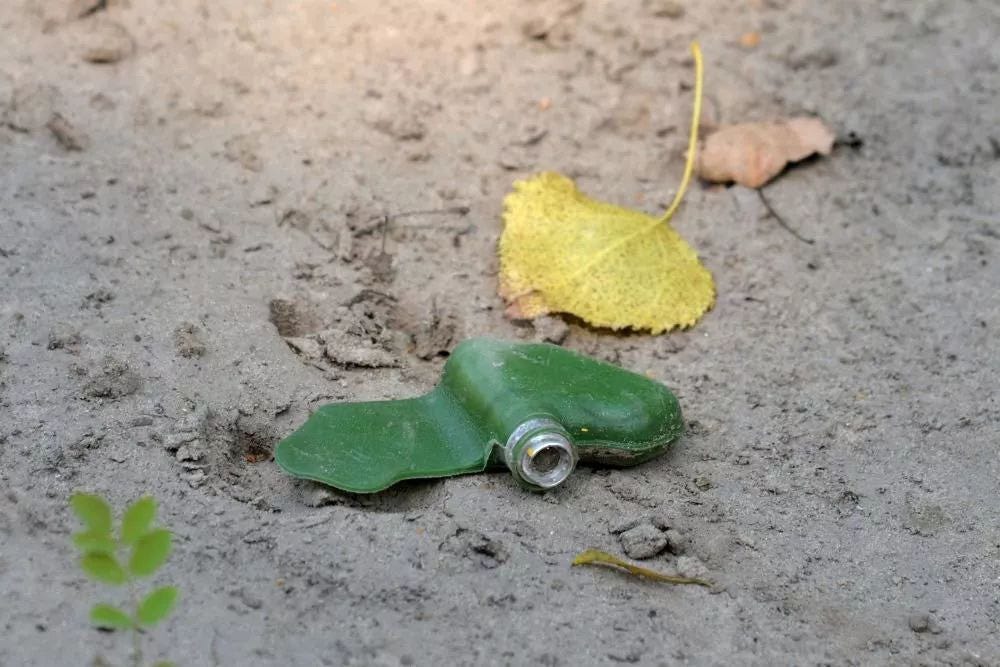Donbass dispatch. Inconvenient casualties of Russia-Ukraine war
As hostilities in Ukraine continue to bring suffering to civilians, media fixation on victims of Russia’s attacks diverts attention from Ukraine’s strikes that are equally brutal
Donetsk
The funeral ceremony for 12-year old Katya Kutubaeva and her grandmother Tatyana Nikolaevna at St. Vladimir's Church in Donetsk was accompanied by sounds of constant missile shelling. The priest's prayer didn’t stop for a moment, and just a few people among dozens attending would shudder every time the missile bursts in the distance. Among them — a tall man, standing behind his sobbing daughter, her head covered with a black shawl. She looked the same age as the deceased Katya. They were classmates.
Another young girl leaned on her grandmother with her weightless body, convulsing from crying. Julia trained in the ballet school along with Katya. When asked by a fellow reporter after the funeral which was not public — only me and two other reporters attended, without getting our cameras out — if she would stay in Donetsk after all this, she was determined: “I will. I can see the future, when all this ends and Donetsk will flourish”.
Katya was killed on August 4 along with her grandmother and her ballet tutor Galina Volodina as they walked on the central alley near Donbass Opera, a renown opera and ballet theatre, after the ballet class. The bodies, dissected into pieces, were seen lying in a parklane named after great Russian poet Alexander Pushkin. Katya’s grandfather rushed to the spot, just across the street from their home, without even putting his shirt on. Journalists’ cameras caught him howling over the mutilated bodies.
According to local authorities, it was the Western-supplied 152-calibre missile launched by Ukrainian artillery into the center of Donetsk, a capital city of Donetsk people’s republic (DPR) that declared independence from Ukraine in 2014, that killed Katya, her grandmother and her teacher. They were among 6 people killed and 30 wounded in multiple strikes on the city that day.
Even though shelling is a general business in Donetsk, August 4 was a special day. A funeral ceremony of woman commander Olga Kachura (known as Korsa) was held in Donbass Opera, famous opera theater in the city center. The ceremony was attended by many people, including army officers.
Ukraine dismissed the claims, saying it was not responsible for the attack (Ukrainian social media channels even claimed the attack was staged and the crushed bodies were just actors).
"It is a great loss for the entire world of ballet. Katya was not only a talented person with God-given ballet qualities, she was also smart and pretty,” Vadim Pisarev, a famous Ukrainian ballet dancer and art director of Donetsk State Academic Opera and Ballet Theater said as we sat in his office.
Pisarev showed Katya pictured in a group photo of Swan Lake production, used for a calendar. Since February, all the performances in Donbass Opera have been canceled — artists travel to Russia to perform.
Teachers and family friends say Katya was about to travel to St. Petersburg, Russia, to get admission at the world-famous Vaganova Ballet Academy. Her trip was delayed for some reason, and the delay became fatal.
Off the record, Donetsk residents fume over the decision of the local authorities to hold Kachura’s funeral ceremony on that day. Any such events should be avoided as they attract the attention of the Ukrainian army, which just means more missile strikes would kill innocent people.
Uncomfortable deaths
Donetsk, with a population of one million, has been on the frontline since 2014, when Ukraine’s civil war, officially called by the Ukrainian government as the Anti-Terrorist Operation (ATO), broke out. Residents are used to missile strikes and kids can often identify whether it’s “incoming” or “outgoing” and what type of weapon is being used.
While many families have left the city over the past 8 years and many more — since February, after local authorities announced evacuation, many have stayed. They are largely old people and women with children, whose husbands, fathers and brothers have been mobilized, and who have nowhere to go.
Civilian deaths have become routine in Donetsk and its suburbs, some of which are just 3-5 km away from the Ukrainian positions. But since the start of what Russia calls “special military operation”, the deaths have increased. The missile shelling of the city center intensified this summer, after Ukraine has got the supplies of long-range missile launchers from NATO allies. On average, 10 people die and get injured in the city and its suburbs daily as a result of Ukrainian missile strikes.
However, these strikes, and the deaths they cause, most often go unreported by the international media (having no reporters in these territories can hardly justify the silence). This is despite the UN High Commission for Human Rights (OHCHR) data for civilian casualties does include civilian casualties recorded in territories controlled by Donetsk and Luhansk People’s republic that declared their independence in 2014, as well as areas currently controlled by Russian armed forces (such as southern regions of Zaporozhye and Kherson). The UN’s latest figures show over 5,800 civilian deaths since February 24, out of which 375 were children, and over 8400 people, including 647 children, injured in the conflict.
In DPR alone, nearly 40 children have died since the February escalation, taking the total number to 130 since 2014, when the conflict started, according to local government. A month earlier before Katya Kutubaeva’s shocking death, another large caliber missile tore off the body of 10-year old Veronika Badina, who was playing with her friend outside her home in central Donetsk. The girl ran towards the entrance once she heard the shelling, but didn’t make it in time.
Also in July, three children born in 2005, 2014 and 2015 were killed while playing at the playground as Ukraine shelled Makiivka, satellite city of Donetsk.
Pictures of these children are not shared on social media, no stories about them are carried out by international media, because they were inconveniently killed by a Ukrainian, or, most probably, NATO-supplied missile.
It is different for victims of Russian attacks, whose stories are not just widely covered (like in the case of four-year-old Liza Dmitrieva, who was killed in the center of Vinnytsia in July in what Russia claimed as a strike on a building where a Ukrainian military meeting was taking place).
Such selective coverage of the victims of the Ukraine war has shaped public opinion in such a way that not many in the U.S. and European countries that are actively supplying weapons to Ukraine realise that these weapons are used to kill civilians, including children.
However, children have been dying in Donbass since the start of the civil war in 2014. In Donetsk, an “Alley of angels” was created to commemorate 66 children who died from Ukraine’s missiles just in the first one year of the conflict. But mentioning the existence of this alley equals to “Russian propaganda”, which becomes inconvenient.
It is not just the case selective coverage, which is likely to be intentional. Lack of fact-checking and simply the fact that the Ukraine war is covered by so many journalists sitting at their desks across the world, who have no idea about Ukraine geography, or the background of the conflict, or access to local sources, but have a clearly-shaped narrative, leads to distortion of reality.
Here, for example, a news article claiming Katya Kutubaeva, whose funeral i attended in Donetsk, was killed by a Russian missile.
In March, Italian newspaper La Stampa has placed a photo taken in the center of Donetsk, where over 20 people were killed by a Tochka-U missile, actively used by Ukraine in the beginning of the war (before it got western missiles of larger caliber) on March 14, without mentioning where the tragedy took place. “So Kiev faces the last assault”, the cover lines read.
Cases like this one, when footage of DPR soldiers clearing nasty “petal” (or “butterfly”) mines in Donetsk was presented as “Russia using controversial butterfly mines in Ukraine”, most often just go unnoticed by global audiences just because they follow the dominating narrative. It becomes convenient to produce false reporting, or to be silent on something that otherwise equals to “war crime”.
Elusive “petals”
The silence of the global media or the UN agencies on the usage of “petal” (Lepestok) mines — known as PFM-1 anti-personnel mines, use of which is prohibited by the 1997 Ottawa Convention — is astonishing.
Since July, the entire city of Donetsk, including the central parks and children’s playgrounds is dotted with these mines that are air-dropped (one projectile delivers over 300 mines), according to local authorities. To date, 66 people, including 2 children, lost their limbs and got other injuries as a result of coming into contact with “petals”, one person died.
“Such missiles generally lead to traumatic amputation of a limb, they usually detonate when a person steps on them,” Vadim Onoprienko, Deputy Director of Donetsk Republican Trauma Hospital, told me back in August. “Only our hospital has received 14 such patients, 7 of whom had to undergo limb amputation”.
Onoprienko said PFM-1 mines were designed not to kill, but to severely wound soldiers in the battlefield, to slow down the enemy's advance. But when it is used in the residential areas, parks and gardens, it becomes deadly. It is almost impossible to distinguish these mines from real leaves, particularly for old people and children. While emergency services in Donetsk are working daily to clear areas from the mines (since July 30, around 20,000 mines were cleared) new missiles carry more of those, and casualties mount.
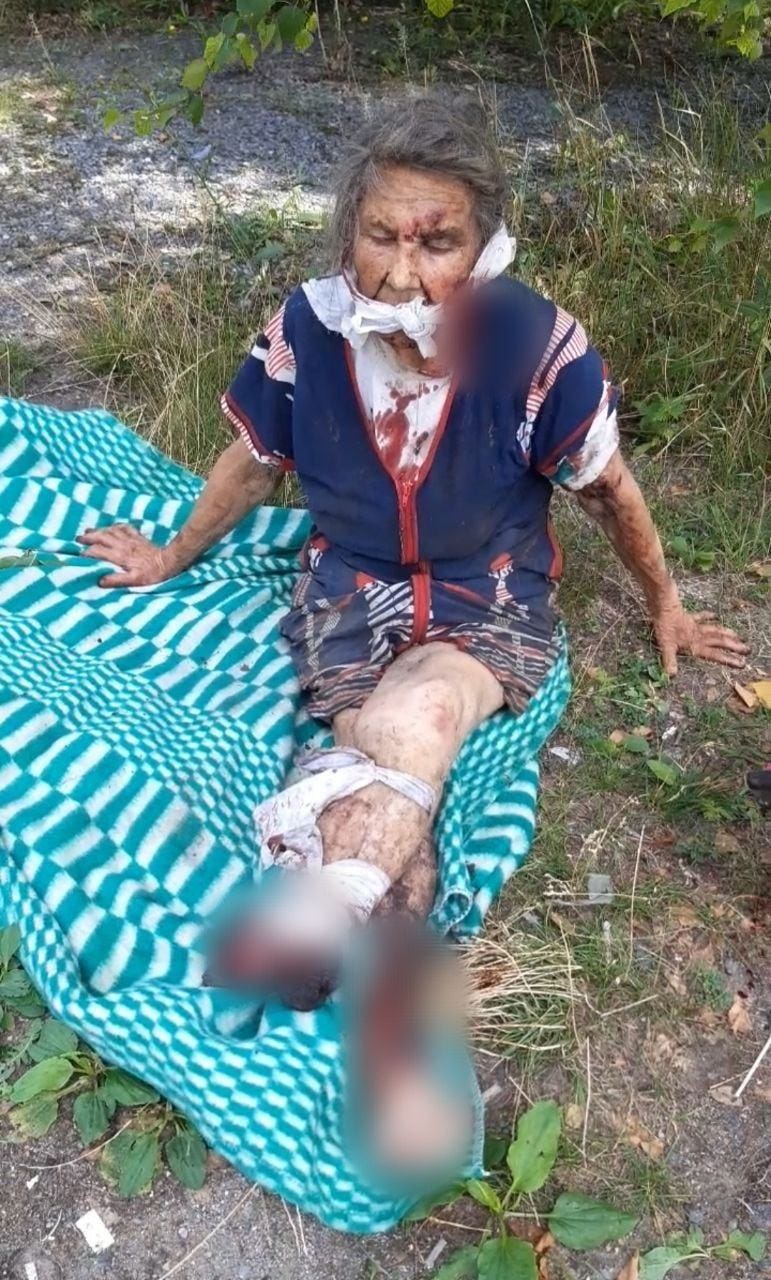
Both Russia and Ukraine are believed to possess PFM-1 mines that were developed in the USSR and actively used during the Afghan war. “More than a million Russian-made PFM-1 land mines—the most common butterfly type, possibly inspired by similar U.S. weapons deployed during the Vietnam War—still litter Afghanistan after decades of conflict,” Scientific American wrote back in 2018.
Ukraine has been a signatory to the 1997 Ottawa Convention since 2006, while Russia, like some key current and past producers and users of landmines, including the United States, China, India, Pakistan, have not signed it.
While international media has largely ignored the reports on the recent “petal” strikes in Donetsk and casualties it has caused, few international media outlets attempted to ask questions on who actually dropped the “petal” mines in Donetsk, without making definite conclusions (which is nearly impossible, particularly if you are not reporting on the site, where you can attempt to capture the serial number of a mine — if you don’t mind risking the chance of being blown up).
“Determining whether the attack was carried out by Ukrainian forces, or whether it was a ‘false flag’ attack or even friendly fire by Russian forces or local militia, as some have suggested, is likely to be difficult,” David Hambling wrote in this Forbes article in early August. The article presents a deep and well-informed analysis, with the author even stating that “the volume of images and videos from Donetsk suggest a definite, deliberate, large-scale attack on a civilian area”.
“It remains unclear whether Ukraine or Russia was responsible for dispersing these controversial weapons,” another article by The France 24 Observers noted.
However, after the UK Ministry of Defense released its Intelligence Update on “butterfly mines” in a form of a Twitter thread, stating that "in Donetsk and Kramatorsk, Russia has highly likely attempted employment of PFM-1 and PFM-1S scatterable anti-personnel mines” with no evidence provided, some media base their reports solely on this assessment.
Ukrainian media claimed Russia staged a false flag attack with “petal” mines in order to blame it. However, unlike Kyiv that uses civilian casualties as argument to demand more support from the West and boost its own people's morale, Russia doesn’t have to do any convincing in Donetsk. People who lived under shelling for past 8 years can easily make out from where the missiles are fired.



